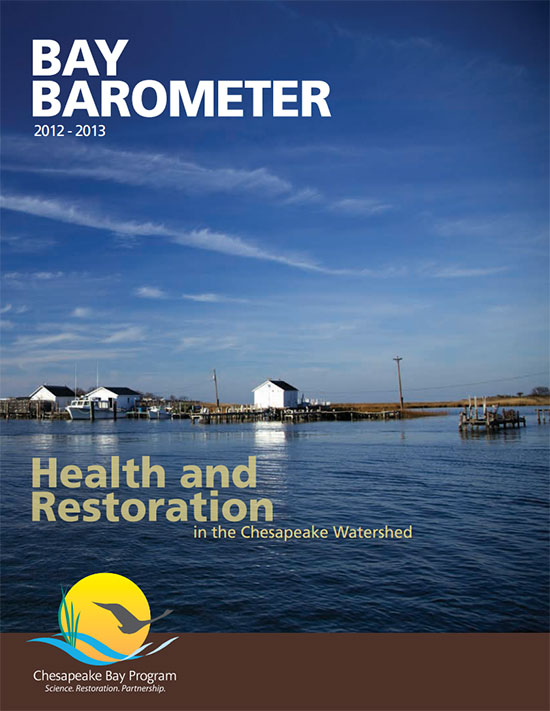Bay Barometer: Chesapeake faces challenges from pollution, development
The Bay Program report offers a snapshot of health and restoration.
The Chesapeake Bay Program’s latest look at watershed health reflects the reality of an impaired Bay, where population growth and pollution could threaten stable blue crab, striped bass and shad populations.

Released today, Bay Barometer: Health and Restoration in the Chesapeake Bay Watershed collects and summarizes the Bay Program’s most recent data on water quality, pollution loads and other “indicators” of Bay health, from ecological markers like underwater grass abundance to measures of progress toward restoration goals.
According to the report, more than half of the watershed’s freshwater streams are in poor condition, almost three-quarters of the Bay’s tidal waters are impaired by chemical contaminants and just 29 percent of the Bay has attained water-quality standards.
But an absence of rapid improvement in Bay health is not an indication that our restoration efforts are ineffective. Instead, it is an indication that lag-times are at play. Knowing that we will have to wait before we see visible improvements in water quality gives officials hope that the work done in 2012—like the 285 miles of forest buffers planted along waterways, the 2,231 acres of wetlands established on agricultural lands or the 34 miles of streams reopened to fish passage—will lead to results in the watershed. In fact, long-term trends indicate nutrient levels in Bay tributaries are improving, with most showing lower levels of nitrogen and phosphorous.
“Bay Program partners have made significant strides in moving us ever closer to a healthy, restored Bay watershed,” said Bay Program Director Nick DiPasquale in a media release. “We will have to exercise persistence and patience as the actions we take to rebuild balance and resilience… into this complex ecosystem… show up in the data from our monitoring networks.”

Comments
There are no comments.
Thank you!
Your comment has been received. Before it can be published, the comment will be reviewed by our team to ensure it adheres with our rules of engagement.
Back to recent stories